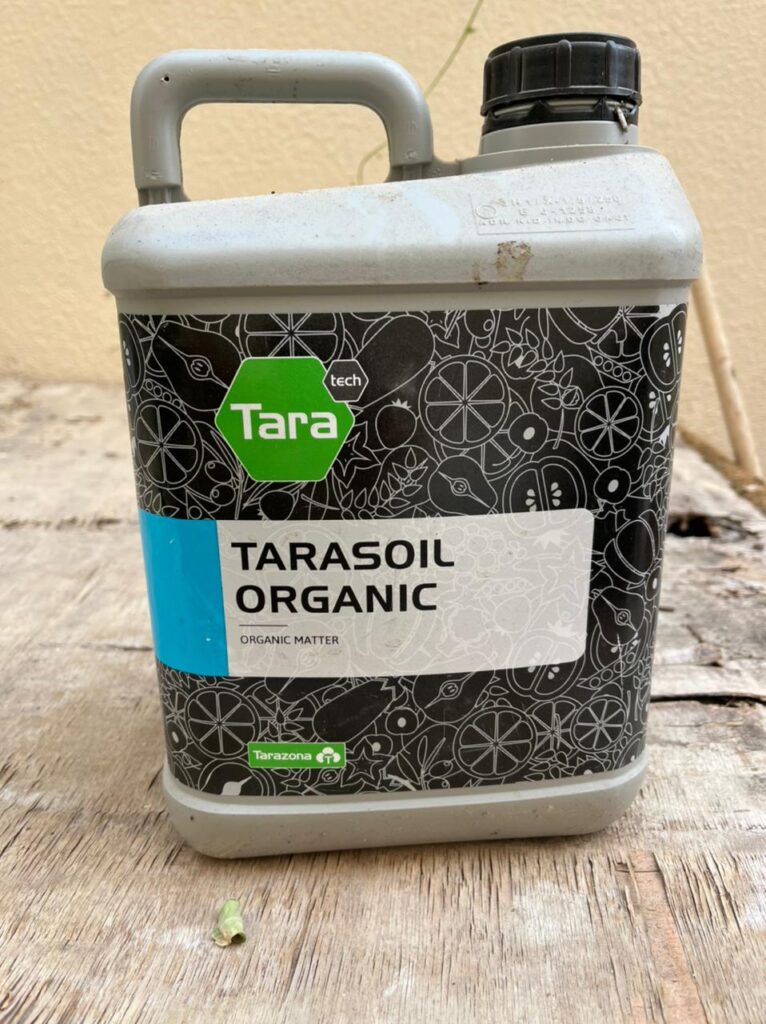Soil Amendments – Humic Acid
Now that we started planting seeds, let’s look at our perennials and bigger plants and trees. What can we do to make them flourish and continue to fruit and flower? One of my first posts was about organic fertilizers and I mentioned Humic acid but said it deserves a post of its own. A link to that one is here.
https://letstalkgardens.com/wp-admin/post.php?post=755&action=edit
After a season where we added very little nutrients to the soil and where the plants have not been able to absorb much, now is a good time to amend the soil so that the locked nutrients are released. Here is where our hero/heroine comes in – Humic acid. Humic acid has fabulous benefits and should be added at the start of every season ideally. The article is a consolidation of my own observations and from various articles available in the public domain.
So, add to the soil 3-5 ml per litre as a soil drench for all your perennials and your trees. You can use both in your plant beds and in the containers. There are many brands available in the market and most of the major brands do the job well.
The major reasons why you should add Humic acid are discussed below but in short, this is its main job. It balances the soil PH and releases the locked nutrients so that they are available to your plants. For instance, Phosphorous stays in your soil but it may react with another nutrient and get locked up so the plant cannot absorb it. Humic acid also neutralizes the toxic heavy metals in the soil and thus makes our food safer to eat.


Now the detail:
I am taking the technical bit from the website
https://drearth.com/living-feed/the-technology/humic-acid/#:~:text=How%20does%20humic%20acid%20benefit,it%20an%20excellent%20root%20stimulator. Humic acid is derived from Leonardite shale and is among the most concentrated organic material available. Elemental analysis of Humic acid has shown it to consist largely of carbon and oxygen (about 50% and 40% respectively). It also contains hydrogen (about 5%), nitrogen (about 3%), phosphorous and sulphur (both less than 1%). Humic acid is a complex of closely related macromolecules. These molecules range in size from less than 1000 to more than 100,000 Daltons, with the lower mass representing the younger material.
The exact composition of Humic acid varies from one source to another but broadly it is made of the following. Over the ages, the vegetation underwent compaction and heating. It slowly carbonized and became coal. This compaction squeezed out the organic acids and esters present in the vegetation, forming a pool on top of the coal bed. This pool dried, aged, and eventually became Leonardite shale. Because of its vegetative origin, this material is very rich and beneficial to plants today.
How is it helpful?
The main benefits of Humic acid are as follows.
- It improves soil structure. It improves drainage, allows for better water absorption and darkens the soils so more sun can be absorbed. It also improves the drought resistance of the soil.
- It changes the fixative properties of the soil. Meaning that it neutralizes the PH of the soil so that it is balanced and improves and optimizes uptake of nutrients and water holding capacity. It stimulates plant growth with its rich organic and mineral substances. It helps to retain water-soluble inorganic fertilizers in the root zones, enhances the uptake of nitrogen by plants and reduces the availability of toxic substances in the soil.
- It stimulates plant enzymes and increases their production and also stimulates the growth and proliferation of desirable micro-organisms in the soil.
- It enhances the plant’s natural resistance against diseases and pesticides, stimulates root growth, especially vertically and enables better nutrient uptake.
- It increases the vitamin and mineral content of the plants and thickens cell walls in fruit and prolongs their storage and shelf time.
- It increases the germination and viability of the seeds and stimulates plant growth.
- It also increases the quality of yields and improves their physical appearance and nutritional value as minerals and vitamins are better absorbed.
Soil pH affects many chemical and biological reactions. It is an important parameter for plant nutrition – in high acidity, absorption of nutrients such as nitrogen, phosphorus, potassium, sulphur, and calcium diminishes; in high alkaline conditions, absorption of iron, manganese, boron, copper and zinc decreases.
Humic acid buffers soil pH to 5.5 to 7.5 levels which is ideal for plant development and nutrients absorption. Thus, acting as a natural chelator, they help plant roots to absorb nutrients more efficiently to create a long-term positive effect on soil quality and productivity. In comparison, conventional chemical fertilizers only show short-term effects without any plus benefits on soil structure and soil productivity.
The above information is from the website – https://www.earth-smart-solutions.com/blogs/blog/humic-acid-and-its-amazing-benefits-1
It also works well in Hydroponics and you can add it to your nutrient water @3 ml per litre. It definitely increases flower and fruit yields. This works particularly well with Humic acid from highly oxidized lignate. So, people get out your Humic acid and apply it now to all your beds and your containers and see the magic once again. Enjoy the season!






3 Responses